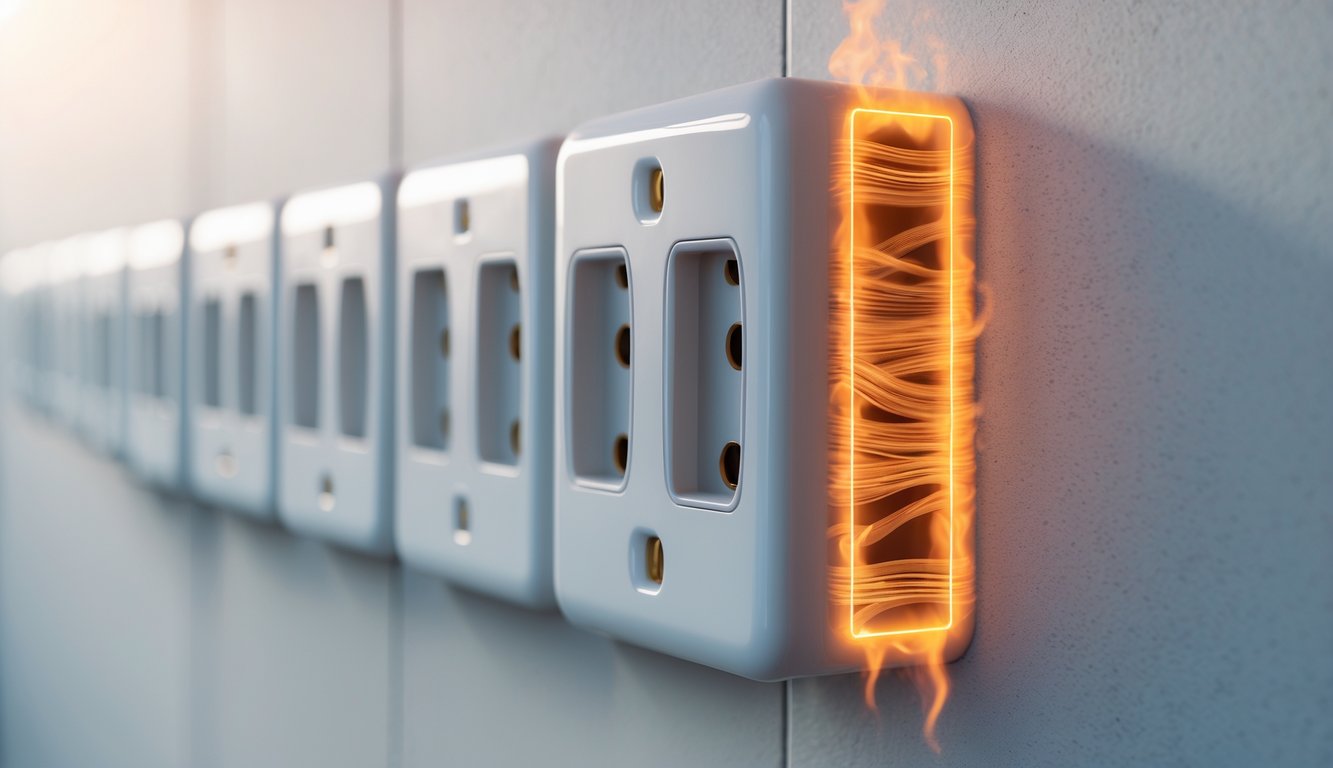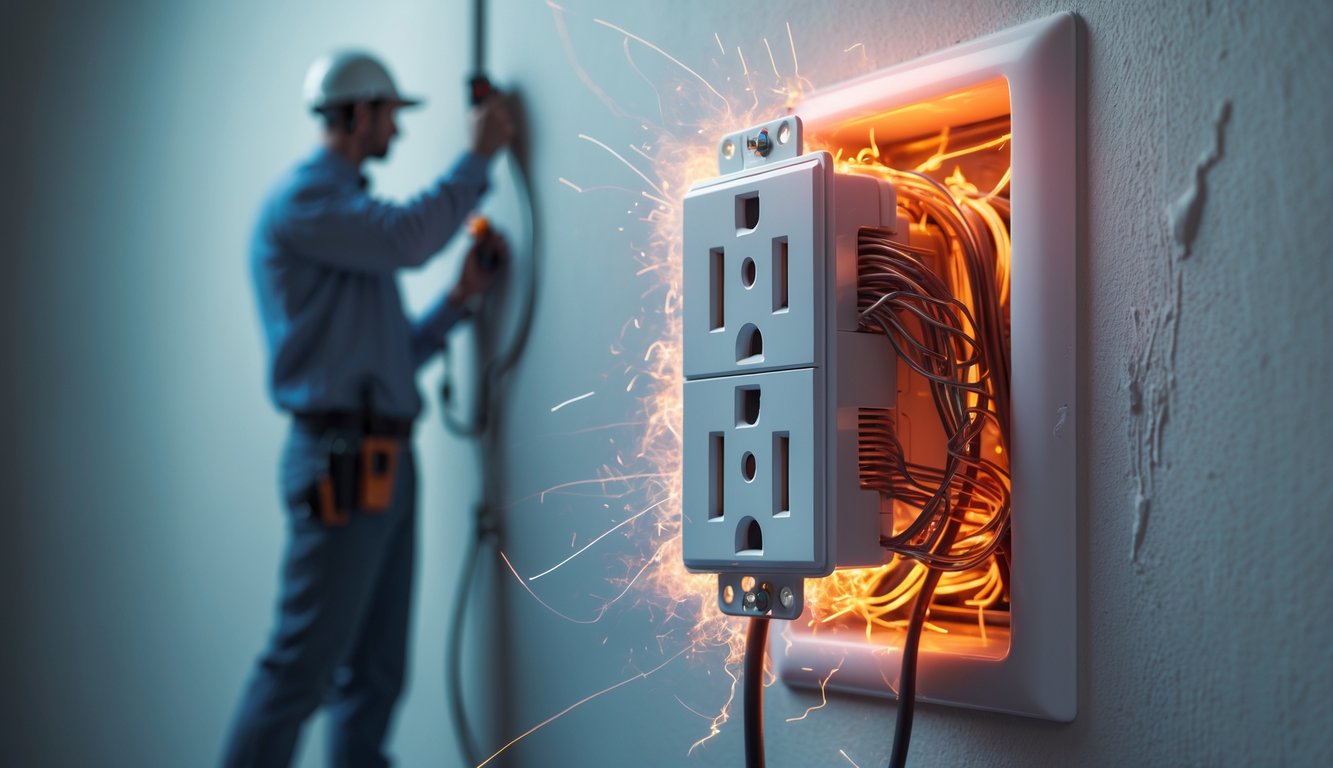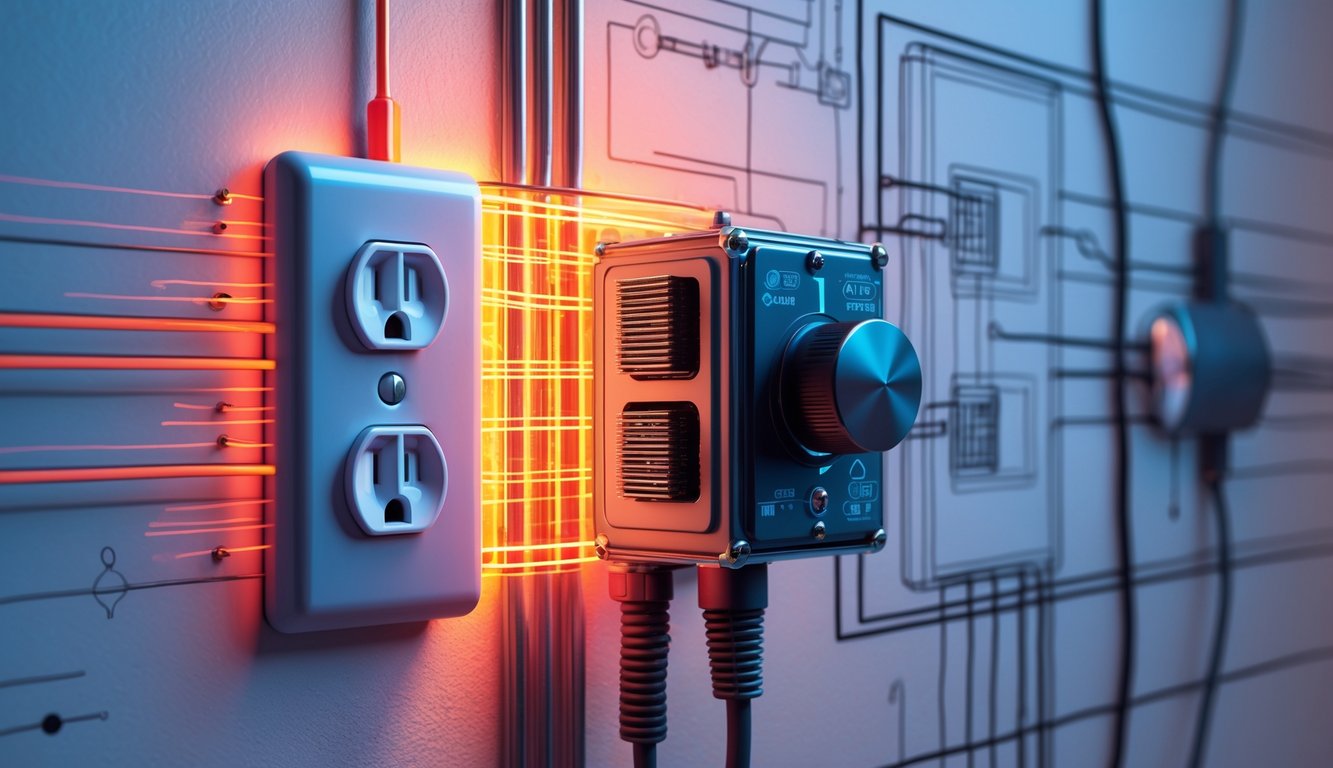
Hidden Electrical Problems Behind Overheated Outlets

Nobody checks what’s behind their walls. Out of sight, out of mind, right? Meanwhile, wires are touching, insulation’s crumbling, maybe there’s been a leak (or a mouse with a taste for copper), and suddenly you’re wondering why your phone charger feels like it’s prepping for a barbecue. Sometimes I think people just like to gamble with house fires.
Faulty Wiring and Damaged Outlets
I’ve seen outlets that look fine, but the second you bump them, sparks fly like it’s the Fourth of July. Usually, it’s the wires behind the plate—old, brittle, maybe chewed by something with tiny teeth. National Fire Protection Association says faulty wiring is the top cause of electrical fires, and honestly, that checks out.
If your outlets wiggle, or the plastic’s brown or warm, it’s probably loose screws or cracked plastic. Old houses with aluminum wiring? Nightmare. And don’t get me started on people who use tape as a “fix.” I had a tech once say, “Don’t trust the wall, trust your infrared thermometer.” Not that I own one. But if your electrician does, let them check for hotspots. Sometimes people twist wires together and call it good—until it isn’t. Here’s a link with more on what to look for.
Short Circuits and Electrical Surges
Short circuits are sneaky. One moment there’s a dull “pop,” next thing you know, the breaker’s tripped and you smell that weird burnt metal smell. I’ve seen inside panels where the copper is black and crispy—surge city. Not always lightning or hairdryers in sketchy bathrooms, either. Sometimes it’s just old insulation giving up.
Everyday wear and tear grinds away at wires. The second two wires touch, it’s a race between the breaker and whatever’s about to catch fire. This post explains the slow-burn damage pretty well.
Honestly, nobody wants to test every cable, but if your lights are flickering and every outlet is full, something’s up. Surge protection for the whole house is great, but try convincing someone who’s never seen burnt drywall. And no, extension cords aren’t a solution. They’re just a way to make the problem less obvious.
Moisture and Corrosion Inside Walls
Moisture in the walls—don’t even get me started. Condensation, leaks, or just the universe being annoying, and suddenly your outlet is a science experiment. Copper turns green, screws get fuzzy, and somehow everything gets hotter instead of working better. Kitchens and bathrooms are the worst. I’ve seen outlets rusted out, paint bubbling, the whole bit.
People act like water can’t get into the walls, but I watched a neighbor’s outlet fall out with a chunk of soggy drywall. Corrosion loosens everything, and then the resistance goes up, which means more heat. If you spot bubbling paint or that earthy, musty smell, that’s your cue. Here’s a link with moisture warnings. And for the record, GFCIs aren’t magic. Just because you have one doesn’t mean you’re immune. Maybe check your attic after a storm—sometimes, squirrels get bored.
The Role of Transformers and Dimmer Switches

Transformers. Nobody ever talks about them, but when my outlet gets warm, I’m immediately suspicious of anything with a brick attached. These little boxes, half of them off-brand, will quietly cook your outlet while you’re making coffee.
Transformer Malfunctions and Outlet Overheating
I’ve tossed so many old charger bricks and random speakers because the transformers inside start buzzing or getting weirdly hot. Every electrician I’ve called (and that’s more than I’d like to admit) has pointed out that cheap transformers—especially those sketchy USB chargers—draw weird current and overheat outlets for no obvious reason.
Apparently, a transformer under the wrong load gets hot enough to mess up the insulation and the outlet next to it. Outlets sharing circuits with big plug-in transformers can get voltage spikes, and if you read enough appliance forums, you’ll see horror stories about outlets pulsing or voltage detectors freaking out. Here’s a thread about dimmers and transformers causing chaos.
One Schneider Electric rep told me to always listen for weird transformer noises after plugging in anything heavy. Even if nothing explodes, if the outlet feels warm, it’s probably that little brick being a jerk.
Improper Use of Dimmer Switches
I’ll admit it: I’ve installed dimmers where I shouldn’t have. Turns out, they’re for lights, not for plugging in random gadgets or power strips. The first time I put a dimmer on an outlet, it was a disaster. Should’ve read the box—most dimmers can’t handle electronics or anything that isn’t a bulb.
Here’s a link with the official warnings. If your dimmer switch is hot, especially with anything but lights, that’s bad. Leviton and Lutron both say you’re asking for trouble (and maybe a fire) if you wire dimmers to outlets.
My neighbor once called me because their porch was “toasty”—they’d plugged a fan into a dimmer. The result? Flickering, whining, the wallplate as warm as a fresh bagel. Contractors warn against this all the time. I wish I’d listened years ago—would’ve saved me a lot of melted switches and burned outlet covers.
Essential Electrical Safety Standards and Precautions

My socks are still weirdly warm from standing too close to that sketchy outlet last night—seriously, why does nobody talk about surge protectors or wiring until their house smells like burnt toast? I mean, is the national fire code just bedtime reading for insomniacs? Wait until your wall starts buzzing louder than your fridge; you’ll care real quick.
Safe Appliance Wiring and Installation
Plugging in a new appliance shouldn’t feel like an act of bravery, but if you’ve ever seen a tangle of mystery wires or a plug that looks like it’s been through a war, you get it. Has anyone ever checked if their outlets were updated after disco died? Doubt it. Once found three brands of extension cords knotted together under a couch, and the owner said, “It’s color-coded, so it’s fine.” Sure, buddy. The University of Pennsylvania’s guidelines flat-out tell you to avoid dodgy splitters, but who actually notices until they see a scorch mark?
A worn cord isn’t just a hypothetical—fires happen, and not just in the comments section. I always check for exposed copper or plugs that look like they’ve been stepped on. My neighbor blamed the outlet for flickering lights, but it was his lamp from the Nixon era. Safe install? Use grounded, modern wiring. “It’s always worked” is not a safety plan—old house, old wires, new fire. Just pay an electrician to add outlets instead of doubling up with splitters. Not optional.